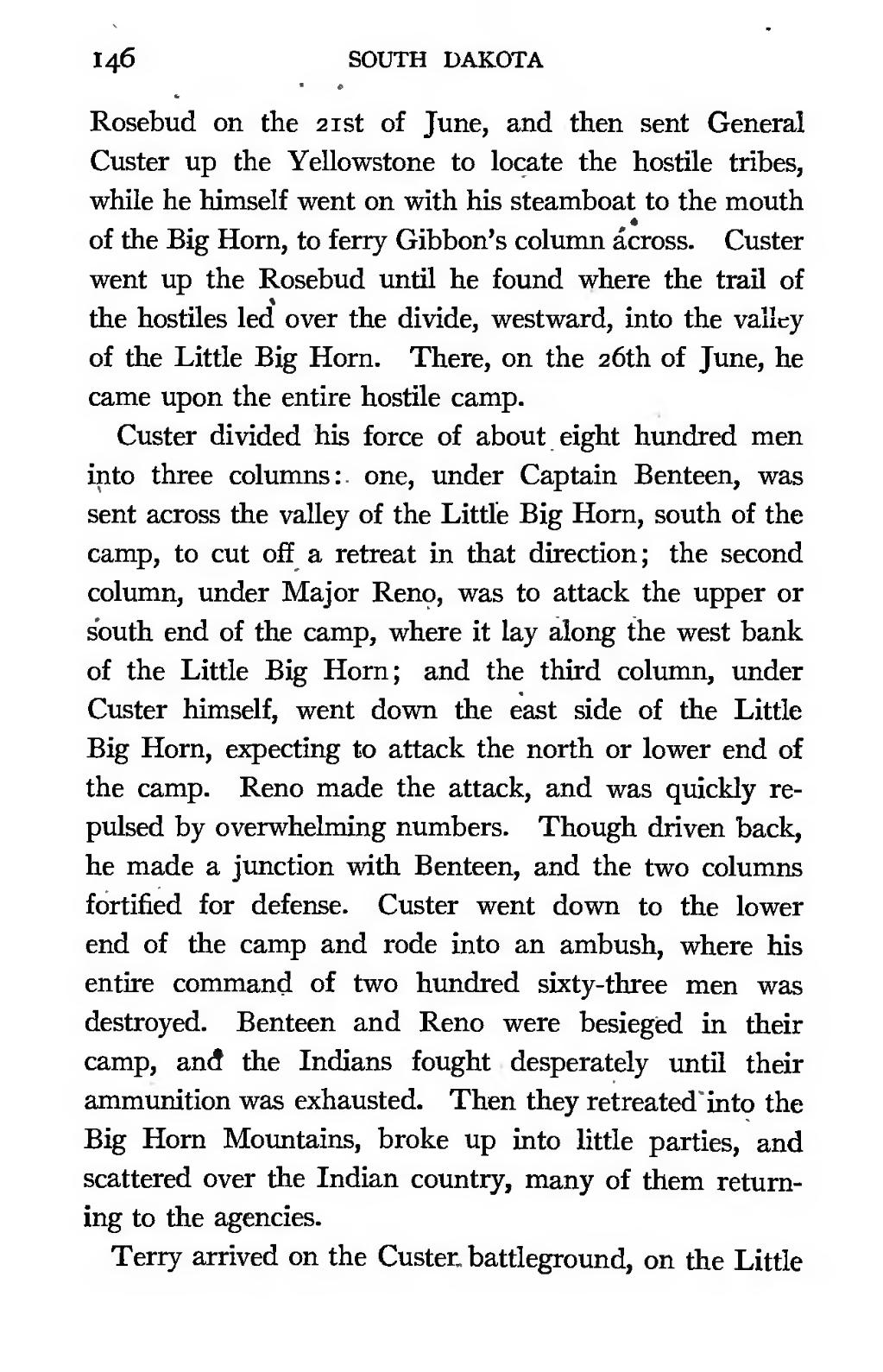Rosebud on the 21st of June, and then sent General Custer up the Yellowstone to locate the hostile tribes, while he himself went on with his steamboat to the mouth of the Big Horn, to ferry Gibbon's column across. Custer went up the Rosebud until he found where the trail of the hostiles led over the divide, westward, into the valley of the Little Big Horn. There, on the 26th of June, he came upon the entire hostile camp.
Custer divided his force of about eight hundred men into three columns: one, under Captain Benteen, was sent across the valley of the Little Big Horn, south of the camp, to cut off a retreat in that direction; the second column, under Major Reno, was to attack the upper or south end of the camp, where it lay along the west bank of the Little Big Horn; and the third column, under Custer himself, went down the east side of the Little Big Horn, expecting to attack the north or lower end of the camp. Reno made the attack, and was quickly repulsed by overwhelming numbers. Though driven back, he made a junction with Benteen, and the two columns fortified for defense. Custer went down to the lower end of the camp and rode into an ambush, where his entire command of two hundred sixty-three men was destroyed. Benteen and Reno were besieged in their camp, and the Indians fought desperately until their ammunition was exhausted. Then they retreated into the Big Horn Mountains, broke up into little parties, and scattered over the Indian country, many of them returning to the agencies.
Terry arrived on the Custer battleground, on the Little
